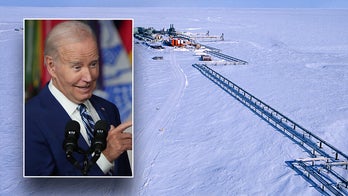As President Obama pushes for more spending on science education and research to keep America globally competitive, the nation’s scientific community continues to suffer a number of setbacks that appears to undermine the president’s goal.
The U.S. is abandoning its space shuttle program, closing the Tevatron, considering defunding the James Webb Space Scope (Hubble’s replacement) and could possibly reject a cutting-edge underground research lab that would restore some prestige to the field of U.S. science.
More than 140 scientific societies and universities sent a letter this week warning U.S. policymakers not to target specific science research programs in their negotiations to cut government spending in exchange for raising the debt limit.
“Everyone understands that legislators face tremendous challenges related to the deficit and the national economy,” said Joanne Carney, director of the Office of Government Relations at the American Association for the Advancement of Science. “But recently, selected research areas have been unfairly trivialized based on misinformation intended to challenge the scientific review process.”
In the letter, the group warned that cutting support for key fields of research “could have a chilling effect on scientists and young people considering a future in science.”
The group argued that social, behavioral and economic research sheds light on U.S. demographic trends, criminal behaviors, decision-making processes crucial to military and national security operations, among other things.
“Simply put, we need all scientists and scientific disciplines working -- alone and together -- to advance our knowledge base,” the group said. “Allocating federal investments competitively through scientific merit review is the very process that has led this country to be a world leader in science.”
But the past few months have been filled with setbacks for science advocates.
Earlier this month, NASA launched its final space shuttle mission after its 30-year program ended, leaving Russia’s space capsules as the sole option for astronauts heading to and from the International Space Station.
The U.S. Energy Department announced earlier this year that it was shutting down by the end of September the Tevatron, the nation’s largest particle accelerator located outside of Chicago, because the agency could no longer count on the annual $35 million to keep it running until 2014.
Late last year, the oversight board of the National Science Foundation dropped out of a planned $875-million underground science lab in South Dakota, leaving the future of the Deep Underground Science and Engineering Laboratory (DUSEL) in doubt. The National Science Board rejected requests from the lab’s designers for more money after burning through the $19 million allocated. And the board didn’t like its proposed role in the project that would have made the foundation part of a stewardship program to run the lab.
Last week, the House Appropriations Committee released its funding bill for Commerce, Justice and Science for the next fiscal year that begins Oct. 1. The bill eliminates funding for the James Webb Space Telescope, NASA’s next-generation space telescope which would be the successor to Hubble and is the space agency’s biggest post-shuttle project.
The committee says the project is billions of dollars over budget and plagued by poor management.
“This legislation includes funding for some of the most critical aspects of government,” House Appropriations Chairman Hal Rogers said in a statement. “However, given this time of fiscal crisis, it is also important that Congress make tough decisions to cut programs where necessary to give priority to programs with broad national reach that have the most benefit to the American people.”
Obama is now hoping new investments in science and technology will help create new jobs in an economy struggling to regain its footing after the worst recession in decades.
Last month, the White House launched a national effort called the Advanced Manufacturing Partnership that seeks to replaced shuttered steel mills with plants producing robotics, nanotechnology and other high-tech advances.
The $500 million initiative includes $70 million for a robotics initiative, $300 million for national security industries and $100 million for research and training to more quickly develop advanced materials at lower costs.
Some of the $500 million would come from existing allocations to government agencies, but other money would require approval by Congress, where the Republican-controlled House is more focused on cutting spending than approving new government initiatives.
The President’s Council of Advisors on Science and Technology hatched the idea for the initiative and warned in a report last month that U.S. leadership in manufacturing is at risk.
It said the United States has been losing research and development associated with manufacturing to other countries. Most importantly, the council noted, the United states is losing the manufacturing competition for products that were invented in the U.S., including laptop computers, flat panel displays and lithium ion batteries.




